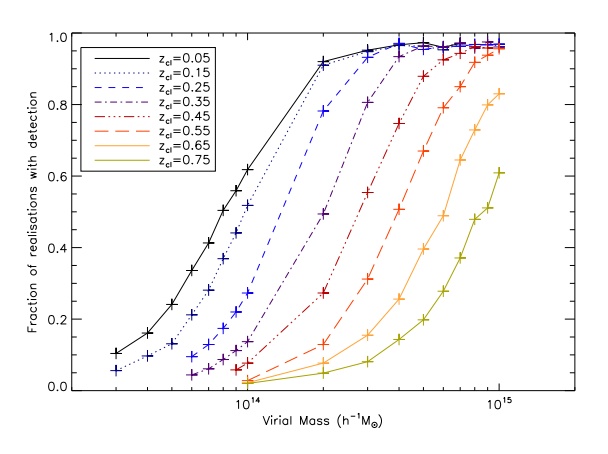| Authors: | A. Leonard, F. Lanusse, J.-L. Starck |
| Journal: | MNRAS |
| Year: | 2014 |
| Download: | ADS | arXiv |
Abstract
We present GLIMPSE - Gravitational Lensing Inversion and MaPping with Sparse Estimators - a new algorithm to generate density reconstructions in three dimensions from photometric weak lensing measurements. This is an extension of earlier work in one dimension aimed at applying compressive sensing theory to the inversion of gravitational lensing measurements to recover 3D density maps. Using the assumption that the density can be represented sparsely in our chosen basis - 2D transverse wavelets and 1D line of sight dirac functions - we show that clusters of galaxies can be identified and accurately localised and characterised using this method. Throughout, we use simulated data consistent with the quality currently attainable in large surveys. We present a thorough statistical analysis of the errors and biases in both the redshifts of detected structures and their amplitudes. The GLIMPSE method is able to produce reconstructions at significantly higher resolution than the input data; in this paper we show reconstructions with 6x finer redshift resolution than the shear data. Considering cluster simulations with 0.05 <= z <= 0.75 and 3e13/h Msun <= Mvir <= 1e15/h Msun, we show that the redshift extent of detected peaks is typically 1-2 pixels, or Dz <~ 0.07, and that we are able to recover an unbiased estimator of the redshift of a detected cluster by considering many realisations of the noise. We also recover an accurate estimator of the mass, that is largely unbiased when the redshift is known, and whose bias is constrained to <~ 5% in the majority of our simulations when the estimated redshift is taken to be the true redshift. This shows a substantial improvement over earlier 3D inversion methods, which showed redshift smearing with a typical standard deviation of 0.2-0.3, a significant damping of the amplitude of the peaks detected, and a bias in the detected redshift.

